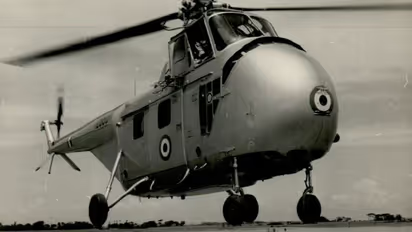From the IAF vault: Story of Sikorsky S-55, the first IAF helicopter
The Sikorsky S-55 was used extensively for nearly a decade for VIP commute, casualty evacuation and civilian aid. It survives to this day in the Air Force museum. IAF historian Anchit Gupta narrates its story
Stay updated with the Breaking News Today and Latest News from across India and around the world. Get real-time updates, in-depth analysis, and comprehensive coverage of India News, World News, Indian Defence News, Kerala News, and Karnataka News. From politics to current affairs, follow every major story as it unfolds. Download the Asianet News Official App to stay informed anytime, anywhere.
Read more Photos on
